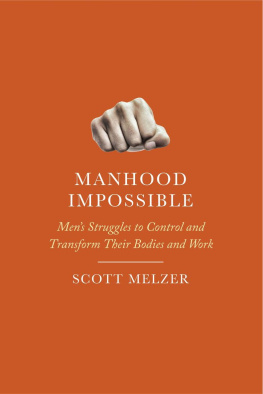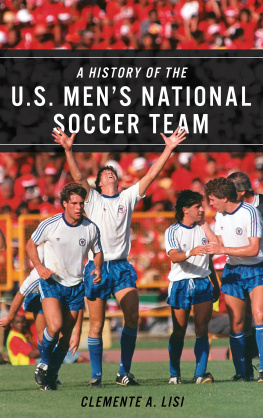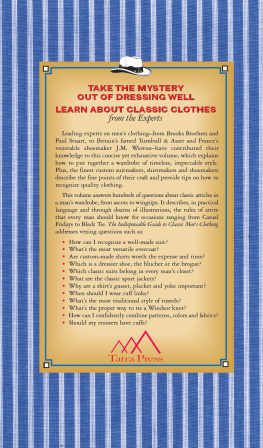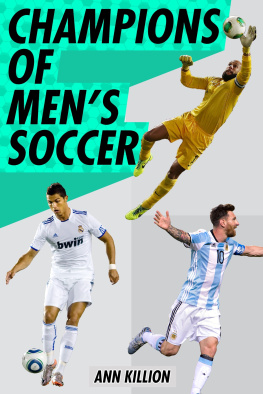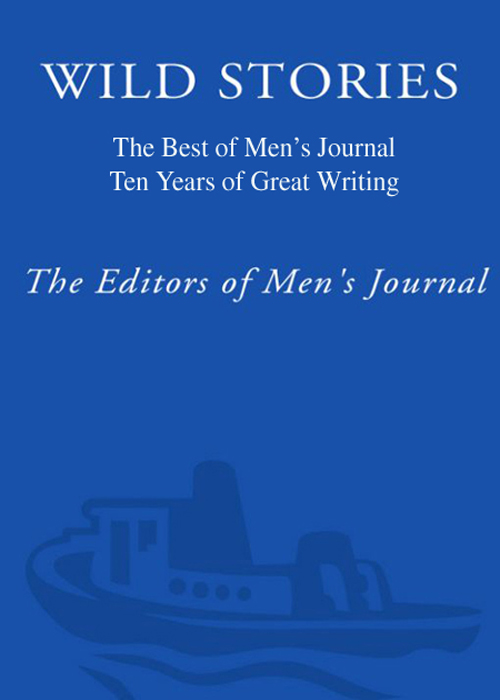
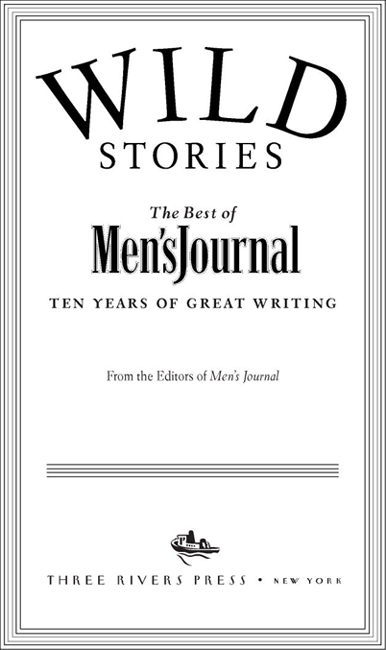
Table of Contents
INTRODUCTION
A perennial lament among editors of glossy travel-and-adventure magazines such as Mens Journal is that they rarely get to leave the island of Manhattan. Its the writers, they say, who have all the fun. But this isnt exactly true. While no one on the staff of Mens Journal has ever driven across India on the treacherous Grand Trunk Road or hassled Colombian rebels with The Worlds Most Dangerous Places author Robert Young Pelton, or ridden a dogsled a thousand miles through the interior of Alaska, we definitely know what its like to do those things.
Thats because writers as talented as the ones gathered here dont just fly off to a place and then come back with a story. In the act of writing artfully about what has happened to them, they manage to embark againonly this time they take us along. Heres P. J. ORourke, who really did drive across India on the Grand Trunk, describing the thoroughfares hazards: Jeeps bust scooters, scooters plow into bicycles, bicycles cover the hoods of jeeps. Cars run into trees. Buses run into ditches, rolling over on their old-fashioned rounded tops until theyre mashed into chapatis of carnage. And everyone runs into pedestrians. A speed bump is called a sleeping policeman in England. I dont know what its called in India. Dead person lying in the road is a guess.
Tim Cahill was the lucky soul (although he didnt necessarily see it that way) who spent several weeks in Colombia with the danger-jaded Robert Young Pelton. Reconstructing a high-profile government raid on a cocaine-making lab twenty-five minutes into the boonies, Cahill writes, Two planes flew over and sprayed the coca field with herbicide, while below, the drug lab itself exploded in picturesque billows of flame and black smoke. Pelton was filming all this with a small digital camera about the size of a box of Cracker Jacks. Good stuff? I asked. Dog-and-pony show, he muttered.
And while training for the Yukon Quest Sled Dog Race in Alaska, John Balzar had to learn how to harness a team of dogs, a task, he writes, thats something between rodeo wrangling and diaper changing. You grab a collar tightly in one fist, unclip the dog from its chain, and with your free hand raise its powerful front legs off the ground. (People who underestimate the brute-muscle force of these creatures have been surprised to discover their fingers broken when theyve pulled away.) Trying to move a dog whose four feet are planted would permit it the advantage of traction, and you would likely find yourself being dragged on your face.
This is what great writing does. It takes you to a place youve never been and makes it real, even unforgettable. It introduces you to compelling characters and paints vivid scenes, whether they are funny, sad, or hair-raising. It even changes the way you think about the world. Writers who can do all this without preaching or bragging or resorting to clichs are exceedingly rare. Not only must they possess the passion and the curiosity to get out there, they must be able to arrange some essential truth out of the beautiful yet bewildering puzzle that is the English language. Mark Twain said that the difference between the right word and the wrong word is the difference between lightning and a lightning bug, and the great ones know how to strike.
These are the kinds of writers whose work is anthologized in this celebration of Mens Journals tenth anniversary. The magazine has been publishing their brand of ambitious feature writing since Jann Wenner launched Mens Journal in 1992. Men have always been oriented toward action and accomplishment, a perspective that life is, or should be, an adventure, he and John Rasmus, the founding editor, wrote in the premiere issue, vowing to define the magazines mission in the broadest sense. Among the feature stories that ran in that first issue were David Robertss hard look at the climber Jeff Lowe, who, in the depths of personal crisis and financial disaster, believed he could redeem his life by scaling the Eiger, the most dangerous rock face in the world; Roy Blount Jr.s hilarious account of his bumbling attempt to learn how to drive a race car; a memoir by Charles Gaines of the summer he and his family built their dream cabin on the shore of Saint Georges Bay in Nova Scotia; and Chip Browns ode to the Mid Ocean Club in Bermuda, a story that contained what I consider to be among the best paragraphs ever written about golf: But just as golf cannot be defined by the segments of society commonly associated with it, so its spirit is not solely embodied in players who know where the ball is going when they hit it. Golf has less to do with sport than with religion, and what makes a golfer is not talent per se, but faithfaith that a better day, or a better hole, or at least a better shot, is coming. Drain a putt, tag a drive, knock a wedge stiff to the pin and suddenly you will have captured all the glory of the game. What other sport offers so many chances for redemption or is so quick to lift the gloom of ineptitude with a moment of grace?
There werent many magazines back then that could pull off such a diverse, compelling, and authentically male mix of feature stories. There still arent. In fact, only a handful of magazines even publish the kinds of long, ambitious feature stories that are calledsometimes with a hint of derisionreads. Most people dont read anymore, the myth goes; their attention spans have been neutered by television, the Internet, and fabloid magazines specializing in splashy photos and inane articles. The new crop of mens magazines, which thrive on todays crowded newsstands by putting scantily clad women on their covers and promising to instruct readers on how to have the abs of a welterweight and the sex life of a Roman gladiator, isnt helping matters. Admittedly, Mens Journal borrows from the lad mags bag of tricks from time to time. But the soul of the magazine has always been its feature well, and reading great stories for the first time has always been when the fun kicks in for us editors. Not only do we genuinely like getting struck by lightning, we enjoy passing the thrill on to Mens Journals readers.
In between that first read and publication, however, comes a vital, delicate, and occasionally alchemic step: the editing process. Back when David Remnick was just a writer (not the editor of The New Yorker as well as a writer), John Schulian, a sportswriter in Chicago, once warned him that editors were mice training to be rats after someone took too sharp a pencil to his prose. But plenty of writers enjoy happy, productive, even irreplaceable relationships with their editors. When William Langewiesche was working on American Ground, his 90,000-word account of the unbuilding of the World Trade Center for The Atlantic Monthly, he and Cullen Murphy, his editor, met several times at a restaurant in Midtown to map out the piece and carve a narrative from the massive amount of material Langewiesche had gathered at Ground Zero. Without that map, provided to me by my beloved editor, Langewiesche said, I wouldve been incapable of making any sense. Its fair to say that each of the stories reprinted here was improved by some good editors working under a sort of self-imposed Hippocratic oath: respect the art, do no harm, cut with care, and invest yourself into making things better.
In that same spirit, we improved this edition of Wild Stories by adding three pieces that were published in 2002, after the book came out in hardcover but still during
Next page

